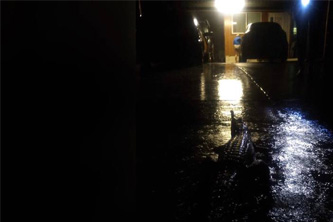CAIRNS, Australia, Feb 4, 2019 (BSS/AFP) – Australia’s military has been
deployed to tackle devastating “once-in-a-century” floods that have inundated
homes, schools and airports in the country’s northeast, forcing hundreds to
flee and bringing crocodiles onto the streets.
The Australian Defence Forces filled sandbags, deployed amphibious cargo
vehicles and helped pluck flashlight-wielding residents from their rooftops
Monday, as monsoon rains drenched the northern state of Queensland.
Australia’s tropical north typically experiences heavy rains during the
monsoon season, but the recent downpour has far exceeded normal levels.
The authorities were forced to open floodgates late Sunday, unleashing
what they called “dangerous and high velocity flows.”
Images from the city of Townsville showed cars mostly submerged and picket
fences barely poking through waist-deep flood waters.
Desperate residents had to contend not only with flash flooding,
landslides and power blackouts, but also reptilian predators that have been
spotted in residential roads and cul-de-sacs.
The Townsville Bulletin said it had received reports of several saltwater
crocodile sightings in the flood-ravaged area.
Emergency services struggled to respond, carrying out 18 “swift water
rescues” overnight.
More than 1,100 people have called the emergency services for urgent help,
according to state premier Annastacia Palaszczuk.
Around 400 Townsville residents have sought shelter at nearby Lavarak
military barracks and the Red Cross is also assisting with the response and
recovery effort.
“Small boats worked through the night to evacuate members of the
community,” said local commander Brigadier Scott Winter.
Palaszczuk warned the communities face more difficulties ahead. Schools
and courts remain closed, more rain is on the way and emergency warnings
still in effect for more than a dozen rivers.
The town of Ingham, just north of Townsville, got over 10 centimetres of
rain in just a few hours on Monday morning, according to the Bureau of
Meteorology.
Winds are expected to gust at up to 100 kilometres (62 miles) an hour on
the coast.
Up to 20,000 homes are at risk of being inundated if the rains continue,
officials said.
“It’s basically not just a one in 20-year event, it’s a one-in-100-year
event,” said Palaszczuk.
“This is unprecedented, we’ve never seen anything like this before,” she
said.
– A year’s worth of rain –
The Bureau of Meteorology’s Adam Blazak told AFP the downpours could
continue until Thursday, while floodwaters will take some time to recede even
when the rains lessen.
Some areas are expected to get a year’s worth of rain in just over a week.
The region receives an average of about 2,000 millimetres (6.5 feet) of
rain annually, but some towns are already on track to pass that.
“I’ve never seen anything like this,” Townsville resident Chris
Brookehouse told national broadcaster ABC, adding that his house was flooded
with water more than one metre deep.
“The volume of water is just incredible. Downstairs is gone, the fridge
and freezer are floating. Another five or six steps and upstairs is gone
too.”
Blazak said that with adverse weather predicted to continue for up to 72
hours, some regions could see record-breaking levels of rainfall.
A silver lining to the deluge is that drought-stricken farmers in western
Queensland have been boosted by the downpours.
The deluge comes amid a severe drought in the eastern inland of the vast
Australian continent, including parts of Queensland, that has left graziers
struggling to keep in business.
Extreme heatwaves during the southern hemisphere summer have led to
maximum-temperature records being broken in some towns.



